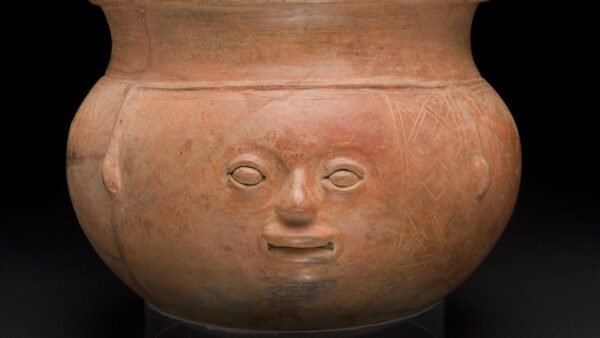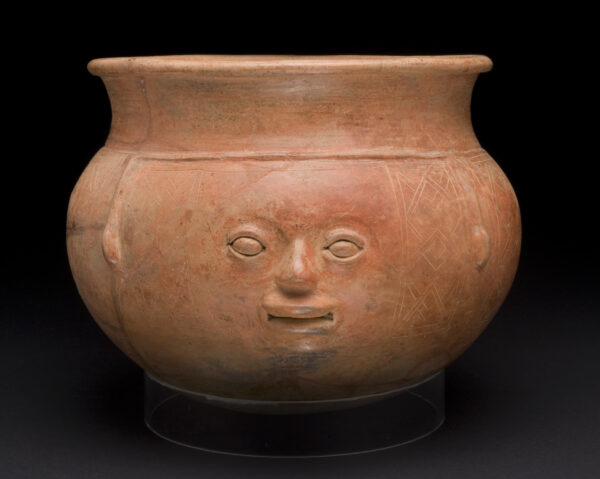
Pre-Columbian Art and Artifacts from the Museum’s Collection
Closes Sunday, March 19
Cessna Art Investigation Gallery
About This Exhibition
WAM’s unique collection of Pre-Columbian art and artifacts was collected by Haig Kurdian between 1954-1959 during expeditions into Mexico and Costa Rica. The collection is mostly pottery, a few pieces of metal, carved shells, and precious stones.
In Mesoamerican culture, pottery was appreciated as an artistic medium–a way people could express emotions and ideas–not solely as a utilitarian material. To make ceramic art, these ancient peoples gathered clay from local sources and formed shapes using only their hands by pinching or coiling the clay. After shaping the objects, they were placed in very hot, open fires and baked until hard.
“I particularly love that tripod bowl, from Teotihuacan, with the square legs. It’s a superb, beautiful piece. To think that someone made that, not on a potter’s wheel, but by piling up coils of clay, then working it and firing it. And it’s survived at least 2,500 years. The other tripod bowl I love represents a squash and has parrot legs. That one is from Colima,” Kurdian said.
The artifacts originated from various locations in Mexico including Colima, Veracruz, Valley of Mexico, Oaxaca, Michoacán, and Guerrero. The collection includes artifacts from Costa Rica: including Atlantic Watershed, Guanacaste-Nicoya Zone, and the Diquis Zone. The objects date from 1000 B.C. to 1450 A.D.
The collection was given to the Wichita Art Museum by Haig, Rima, and Gregory Kurdian in 1977. Then in 1986, Louise and S.O. Beren offered WAM a selection of artifacts, they had earlier received from Haig’s expeditions.

Maker unknown, Human Face Bowl, 200–500 AD. Terra cotta, 9 1/4 x 11 inches. Wichita Art Museum, Gift of S.O. Bud and Louise Beren, with assistance from the Wichita Art Museum Endowment Association